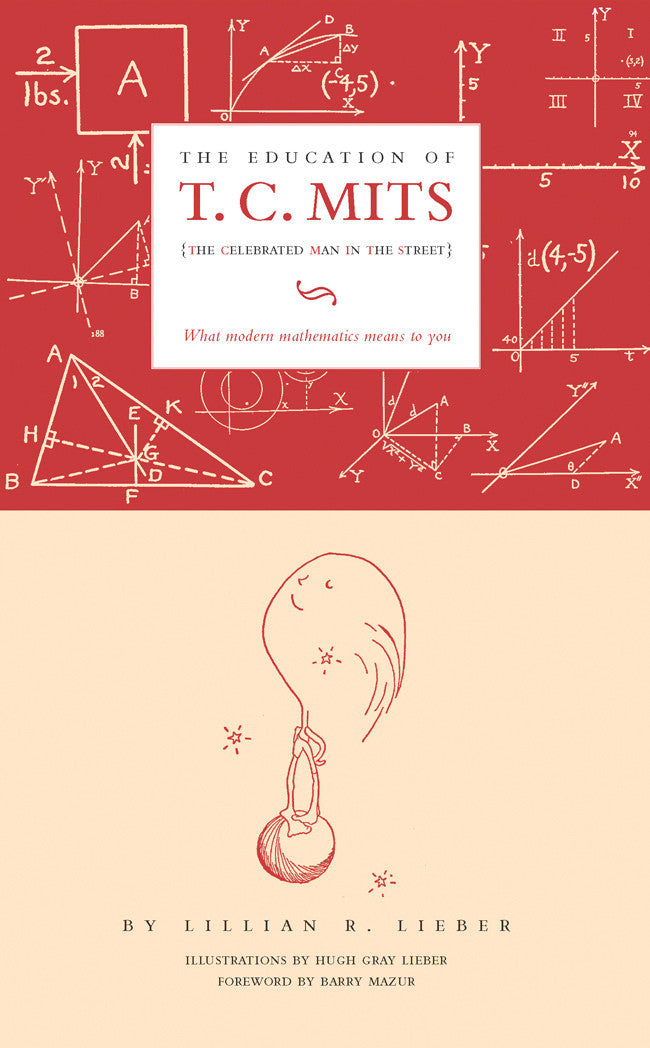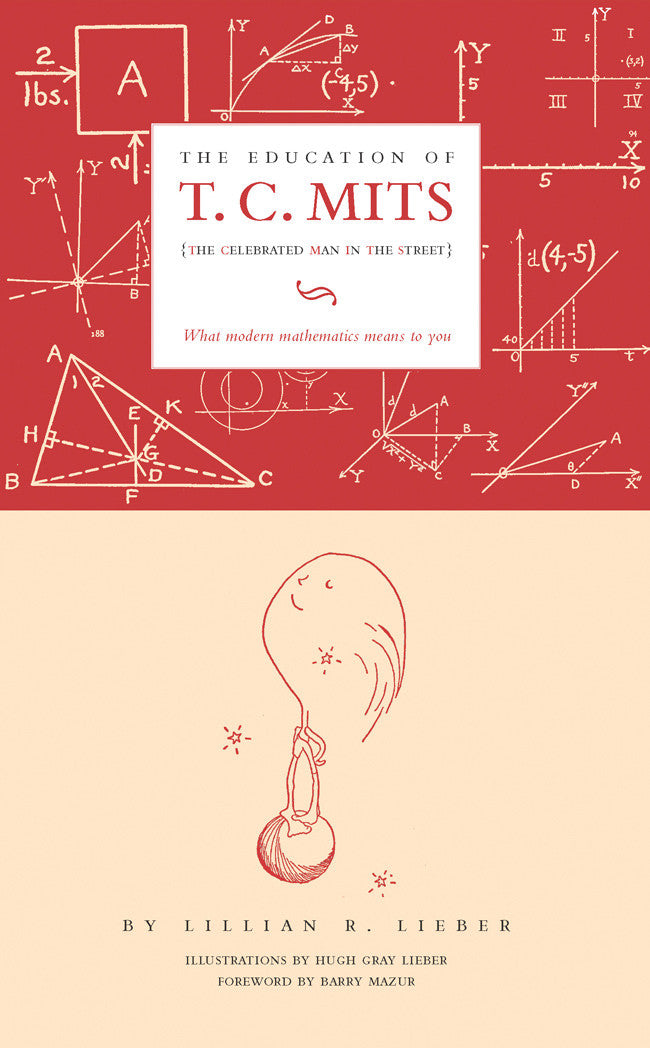The Education of T. C. MITS
The Education of T. C. MITS
Lillian R. Lieber
Couldn't load pickup availability
Introduction by Barry Mazur / Illustrations by Hugh Gray Lieber / 229-page paperback / 5" x 8" / ISBN 978-1-58988-033-7 / Publication Date: June 2007
First published in 1942, this whimsical exploration of how to think in a mathematical mood continues to delight math-lovers of all ages.
Do you know that two times two is not always four; that the sum of the angles in a triangle does not always equal 180°; that sometimes it is possible to draw two parallel lines through the same point? InThe Education of T. C. MITS, Lillian Lieber opens the door to the wonder of mathematical thinking and its application to everyday life. Lieber uses simple language and fanciful illustrations drawn by her husband, Hugh, to present fundamental mathematical concepts with a deft touch.
The new foreword by Harvard University mathematics professor Barry Mazur is a tribute to the Liebers' influence on generations of mathematicians.
Lillian Lieber was the head of the Department of Mathematics at Long Island University. She wrote a series of lighthearted (and well-respected) math books in the 1940s, including The Einstein Theory of Relativity, Infinity, and Mits, Wits & Logic.
Hugh Gray Lieber was the head of the Department of Fine Arts at Long Island University. He illustrated many books written by his wife Lillian.
Barry Mazur Barry Mazur is a mathematician and is the Gerhard Gade University Professor at Harvard University. He is the author of Imagining Numbers (particularly the square root of minus fifteen). He has won numerous honors in his field, including the Veblen Prize, Cole Prize, Steele Prize, and Chauvenet Prize.
"I have studied with pleasure [this] new book…Beautiful examples…Illuminating. I am convinced that [Lieber's] original enterprise will get the recognition it so richly deserves." —Albert Einstein
"The Education of T.C. MITS is a delightful book that is both chastening and stimulating. I enjoyed it enormously, although the reason for the book's charm is hard to analyze. It might lie in the good-humored style, its total lack of condescension to the reader or in its fundamental faith in the human mind. More likely, the answer includes all three." —New York Times
"The Liebers have written an ingenious, entertaining, and illuminating book." —Saturday Review of Literature
"The book should be 'required reading' especially for non-mathematicians." —E.T. Bell, author of The Development of Mathematics
Test your math skills with these questions from The Education of T. C. MITS.
- Which job pays best after the first year:
- one with an annual salary of $1,000 and a $200 annual increase; or
- one with a semiannual salary of $500 and an increase of $50 every six months?
- If paper napkins are each .003 inches thick, and these napkins are piled up, starting with one, then adding two, then adding four, and doubling the new batch 32 times in all, will the pile finally be
- as high as the ceiling?
- as high as the Empire State Building? or
- over 100 miles high?
- Suppose the equator (about 25,000 miles long) were a steel band and it were cut open at one point and an additional piece ten feet long spliced in. Would the space created between the equator and the earth be large enough for
- a person six feet tall to walk through?
- a man to crawl through? or
- a piece of tissue paper to be slipped through?
Answers:
(1) b; (2) c; (3) b
These questions are designed to make you think and to show you that your hunches need to be verified with calculations. As Lillian Lieber says:
Please remember that
it takes a little effort
to drive a car,
or to swim,
or to do almost anything.
But, if the result is worth while,
why growl at the effort?
After all,
the only way to make no effort at all
is to be dead!
The Moral: Wake up and LIVE!
And
follow your hunches and
check them!


